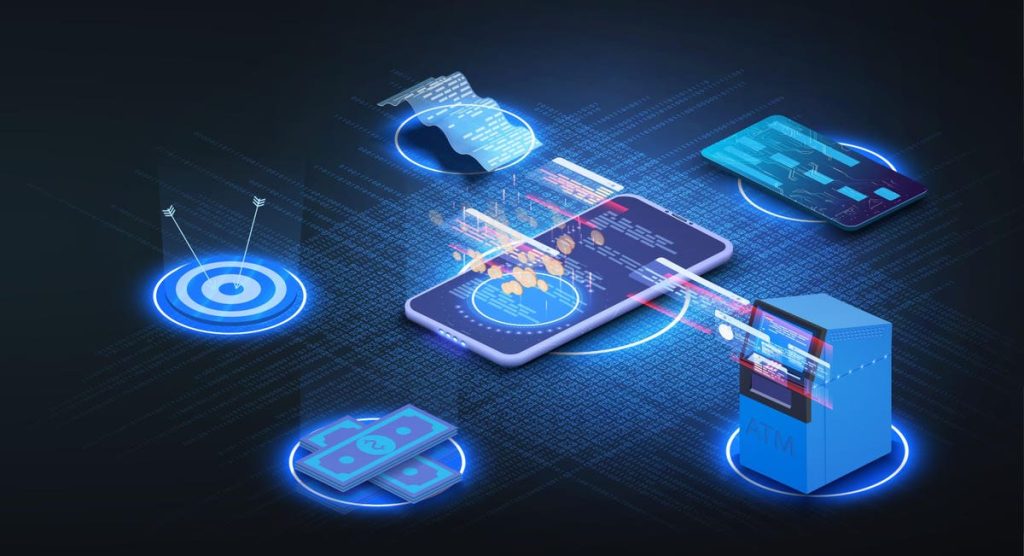Greg Cohen is the chief executive officer of Fortis, a leading integrated commerce platform.
The embedded payments revolution has already begun for consumers, changing the way people pay for goods and services online. Many businesses that sell directly to consumers use embedded payments—think Uber or Grubhub—which allow you to order without entering account information or toggling between apps.
I believe payments in the manufacturing sector will quickly follow suit. Manufacturers rival retail companies in regards to the amount they process each year. With manufacturers constantly looking for ways to improve operations and efficiencies, I believe embedded payments will likely be the next step to meet increasing demand.
As someone who leads a company that services embedded payments for business-to-business (B2B) customers, here is a look at the state of payments in the B2B manufacturing sector and the effect I believe embedded payments will have on the industry in the coming years.
Predictions As Manufacturers Move From Older Systems
Despite the opportunity to digitize and streamline manufacturing payments, I see paper invoices, checks and wire transfers still used in the majority of transactions. In fact, as of two years ago, about 65% of invoice production worldwide was still found to be paper-based.
I find that this approach tends to slow down cashflows, hinder productivity and is an overall archaic way of doing business. When B2B companies rely on on-premises systems and manual workflows, they risk cutting their organization off from innovation opportunities.
Looking ahead, the embedded finance capabilities that B2C companies like Uber and Lyft have already shifted to can be a template to better serve B2B businesses, especially B2B manufacturing. Switching to digitized processes can help resolve some of the unique challenges B2B companies face by identifying the right approach to sell more products, operate more efficiently and accelerate receivables.
1. The industry looks to ultimately embrace digitization across operations.
Buyers are consumers too, which sets their expectations when purchasing on the job. But many B2B manufacturers struggle to adapt payment solutions designed for consumers for B2B use. I believe this is because of the more complex sales process and a smaller embedded finance market serving the space.
As compared to B2C payments, B2B payments can be longer to process, since more team members are involved (accounts payable, billing, etc.). B2B purchases are also usually in larger quantities and done on a more regular basis. That being said, the proper payment gateway can help alleviate these issues. A gateway that has the right tools to accept all types of payments like ACH, EFTs and credit cards can mitigate long processing times and expedite purchases.
There is an emerging opportunity where digitization can also help B2B businesses understand the different ways buyers order products. While some still use catalogs and call-in orders, many are likely to order online where embedded payment capabilities can help expand commerce. When customers have a positive payment experience, it increases acceptance rates and sales—a lesson from the consumer side that I believe B2B companies should embrace.
The market has changed with the emergence of distinct marketplaces where buyers include end users as well as distributors that purchase goods from manufacturers and act as intermediaries in resale transactions. These marketplaces represent business growth opportunities online. Because of this, I see B2B manufacturers pushing ahead with digitization initiatives despite some early challenges.
2. B2B manufacturers will find ways to integrate digital commerce capabilities.
After digitizing operations and automating processes, the next step is to elevate enterprise resource planning (ERP) functionality by integrating digital payments. A recent survey found 77% of manufacturing CFOs agree improving payment processes is the most important reason to upgrade their systems.
Embedding payments into the ERP system can streamline processing and reduce internal workloads, saving manufacturers labor costs and reducing errors caused by manual data entry.
To realize these goals and maximize investments in existing business systems, B2B manufacturers that are looking for embedded commerce features should carefully evaluate payment vendors’ integration capabilities. Look to prioritize API integration tools with flexibility that can meet your unique business needs and that have robust hands-on support.
3. Receivables will accelerate with digitized accounts payable and accounts receivable systems.
Managing accounts payable and receivable systems with manual processes isn’t just inefficient—it tends to slow down cash flow and can even make it more difficult for a manufacturer to scale operations.
As the industry moves to embed payment capabilities, I see this as creating a natural receivables accelerator, enabling instant payments and eliminating the lengthy collection process that’s built into the traditional approach.
Potential hurdles to accelerating these digitized systems include card data on file lending itself to fraud/data leaks. Also, real-time payments still pose threats to accuracy without direct human intervention.
Tips include making sure to work with a payment provider that has security measures in place. The ones that should be on your radar include PCI compliance and level 2 and 3 card processing. Also, payment providers with deep, ERP expertise should be prioritized.
I believe accelerated operations will lead to larger purchases completed more frequently, lending greater cashflows and the expansion of the industry at large. To keep up, businesses will want to facilitate as many payment types as possible.
Learning From B2C
The proof of concept has existed for years with consumer-facing businesses. As new technologies are adopted and a new crop of buyers and sellers interact in the manufacturing ecosystem, next-gen stakeholders can help their companies make major improvements on the payments side.
As mentioned earlier, B2C payments tend to be faster to process. B2B manufacturers can learn from this speed and implement it for themselves with changes to how they accept payments.
As the movement toward cloud-based ERP solutions unlocks more payment capabilities, I believe it will ultimately result in stronger commerce capabilities overall. It’s an exciting time in the B2B manufacturing sector, and those who embrace the future of payments sooner than competitors have the potential to set themselves up for greater success.
Forbes Business Council is the foremost growth and networking organization for business owners and leaders. Do I qualify?
Read the full article here










